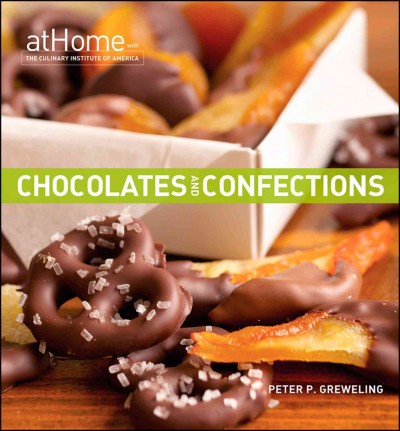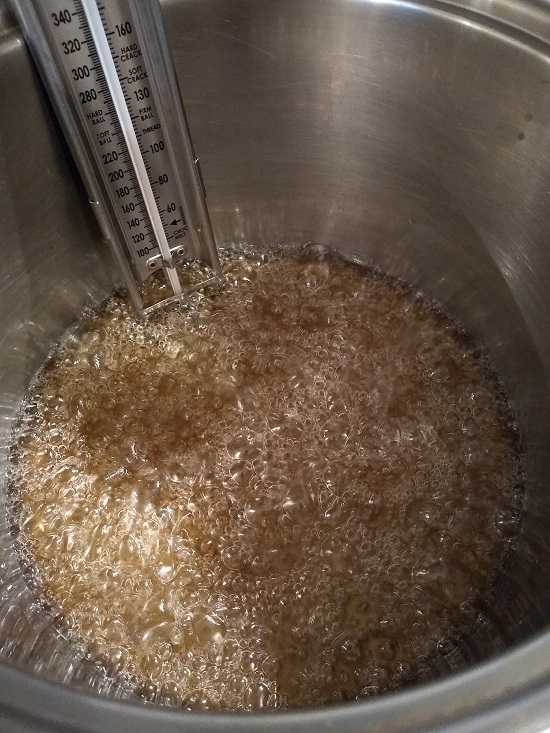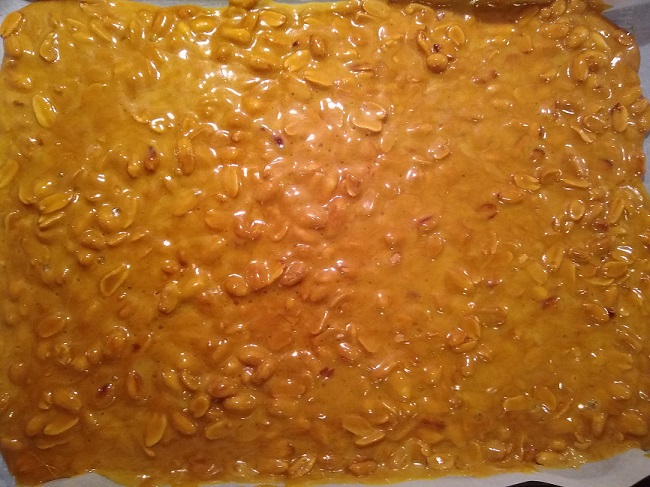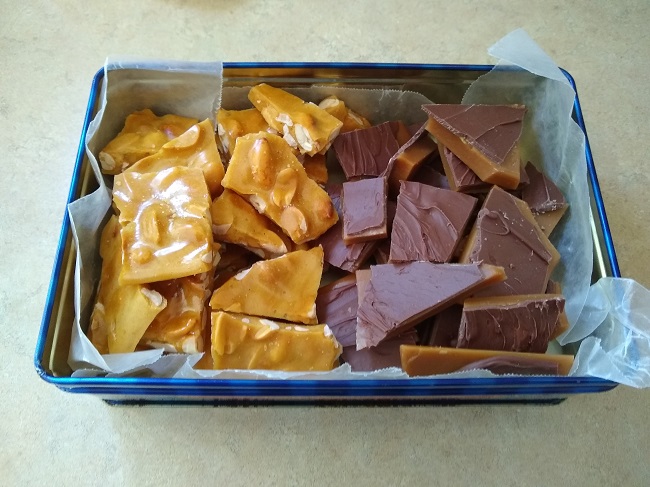Peanut brittle. I confess it’s not my favorite, but there are members of my household who would be tempted to sell their soul for that delight. I decided I would try to make this craved for sweet, so I scoured the Minerva catalog for candy making cookbooks. Some I will return to like Hand-Crafted Candy Bars: From Scratch, All Natural, Gloriously Grown-Up Confections by Susie Norris and Susan Heeger, but I settled on Chocolates and Confections: At Home With the Culinary Institute of America by Peter B. Greweling. And the Peanut Brittle was amazing although it almost didn’t turn out that way.
According to the book jacket, Peter P. Greweling is “the award-winning author of Chocolates and Confections: Formula, Theory, and Technique for the Artisan Confectioner and is a professor of baking and pastry arts at The Culinary Institute of America, a Certified Master Baker, and a Certified Hospitality Educator.”
The book is a wealth of candy making information. Beginning with the equipment you need and equipment you don’t need and the right ingredients and the wrong ingredients, the book gives you all the information to be successful. From chocolates, even molded ones, to jellies to lollipops to fudge, nougats, toffees and more – it’s all in there.
 There are a number of photographs, but I would have liked a few more. The instructions are clear and the ingredients are given by weight and by “normal” measuring means like cups and tablespoons. Throughout the book are “What If” sections to help with any issues you might run into such as, “What if my marzipan is oily and cracks?” Each recipe has “Keys to Success” to help with the final touches, and for some of the recipes, like the Caramel Cream Filling it offers suggestions for other ways it can be used. As a novice, I felt comfortable and confident making the recipe and ambitious to try more.
There are a number of photographs, but I would have liked a few more. The instructions are clear and the ingredients are given by weight and by “normal” measuring means like cups and tablespoons. Throughout the book are “What If” sections to help with any issues you might run into such as, “What if my marzipan is oily and cracks?” Each recipe has “Keys to Success” to help with the final touches, and for some of the recipes, like the Caramel Cream Filling it offers suggestions for other ways it can be used. As a novice, I felt comfortable and confident making the recipe and ambitious to try more.
I am not a candy making professional, but I do make English toffee every holiday season, so I was a little familiar with the process, but I was still hesitant. Candy making deals with high temperatures and you have to be aware and alert to the temperature of the concoction as it cooks. So I had all my equipment and ingredients ready and waiting. (I’m the type of cook that begins cooking and then scrambles to get the ingredients.)
 Once I had all I needed on standby, the fun began. I followed the step by step instructions. I was a whole lot nervous when the instructions told me to bring the mixture to a boil and then cover and let boil for 4 minutes without mixing. Having learned that English toffee is like a controlled burning of butter and sugar and constant mixing is vitally important to its success, I was certain smoke would billow out of the pot, my neighbors would hear my smoke detector yet again, and that I’d be throwing out the first batch. But I did what Greweling said, and believe it or not, he was spot on.
Once I had all I needed on standby, the fun began. I followed the step by step instructions. I was a whole lot nervous when the instructions told me to bring the mixture to a boil and then cover and let boil for 4 minutes without mixing. Having learned that English toffee is like a controlled burning of butter and sugar and constant mixing is vitally important to its success, I was certain smoke would billow out of the pot, my neighbors would hear my smoke detector yet again, and that I’d be throwing out the first batch. But I did what Greweling said, and believe it or not, he was spot on.
 I thought I was in the clear, and once I added the peanuts, I wasn’t as vigilant with my mixing. Do you know that peanuts burn at lower temperatures? Fortunately, I caught it before the whole batch was ruined, but I did scoop out a couple scorched peanuts. I didn’t tell anyone about it and when the final product was being devoured, no one asked, “Do I detect a slight burnt taste?”, so I think I did ok. When I made the second batch of Peanut Brittle, yes, it was so yummy, my friends and family demanded a second batch, I wasn’t as neglectful and no peanuts were harmed in my second attempt.
I thought I was in the clear, and once I added the peanuts, I wasn’t as vigilant with my mixing. Do you know that peanuts burn at lower temperatures? Fortunately, I caught it before the whole batch was ruined, but I did scoop out a couple scorched peanuts. I didn’t tell anyone about it and when the final product was being devoured, no one asked, “Do I detect a slight burnt taste?”, so I think I did ok. When I made the second batch of Peanut Brittle, yes, it was so yummy, my friends and family demanded a second batch, I wasn’t as neglectful and no peanuts were harmed in my second attempt.
 I even brought some to work for my co-workers and they loved it. (I’m so glad they enjoy being my guinea pigs.) So, get on that Minerva catalog and have fun searching for cookbooks and try something new! Even if you make a mistake or two, it makes you more brave for next time.
I even brought some to work for my co-workers and they loved it. (I’m so glad they enjoy being my guinea pigs.) So, get on that Minerva catalog and have fun searching for cookbooks and try something new! Even if you make a mistake or two, it makes you more brave for next time.
